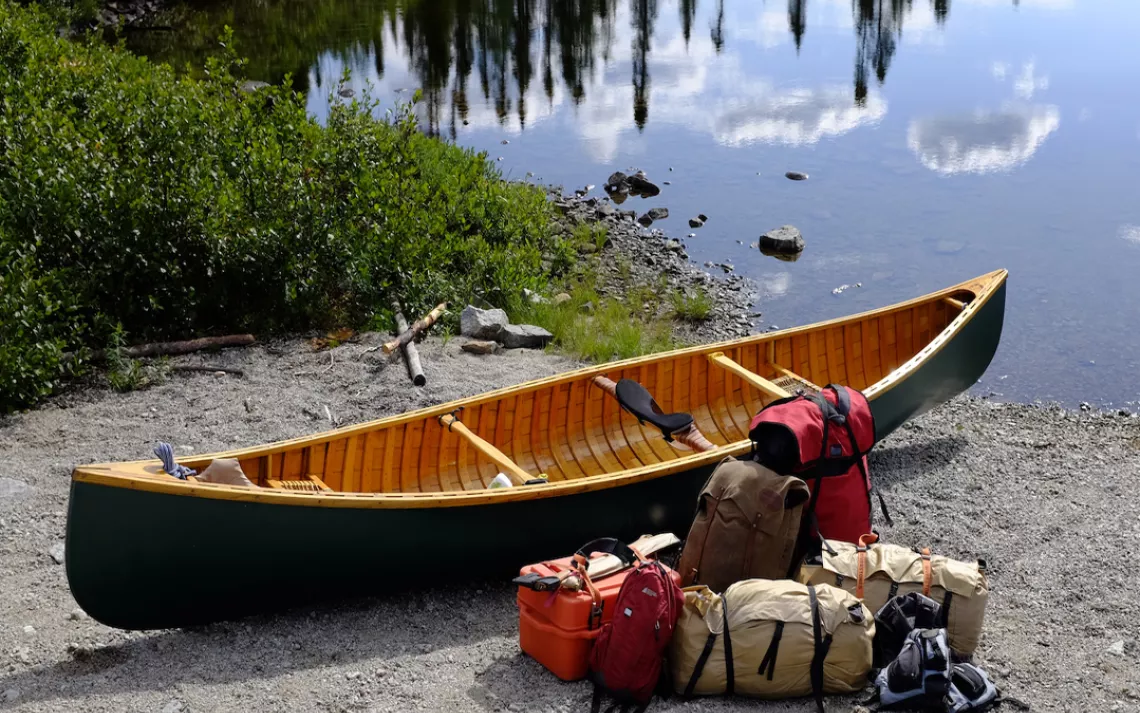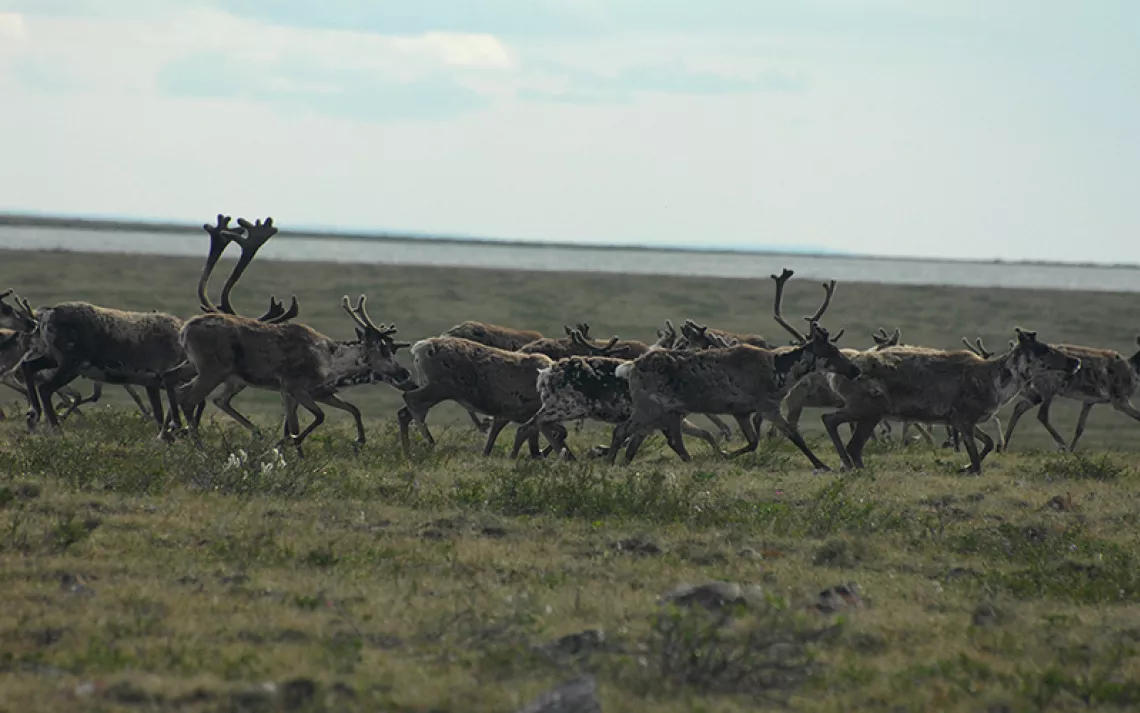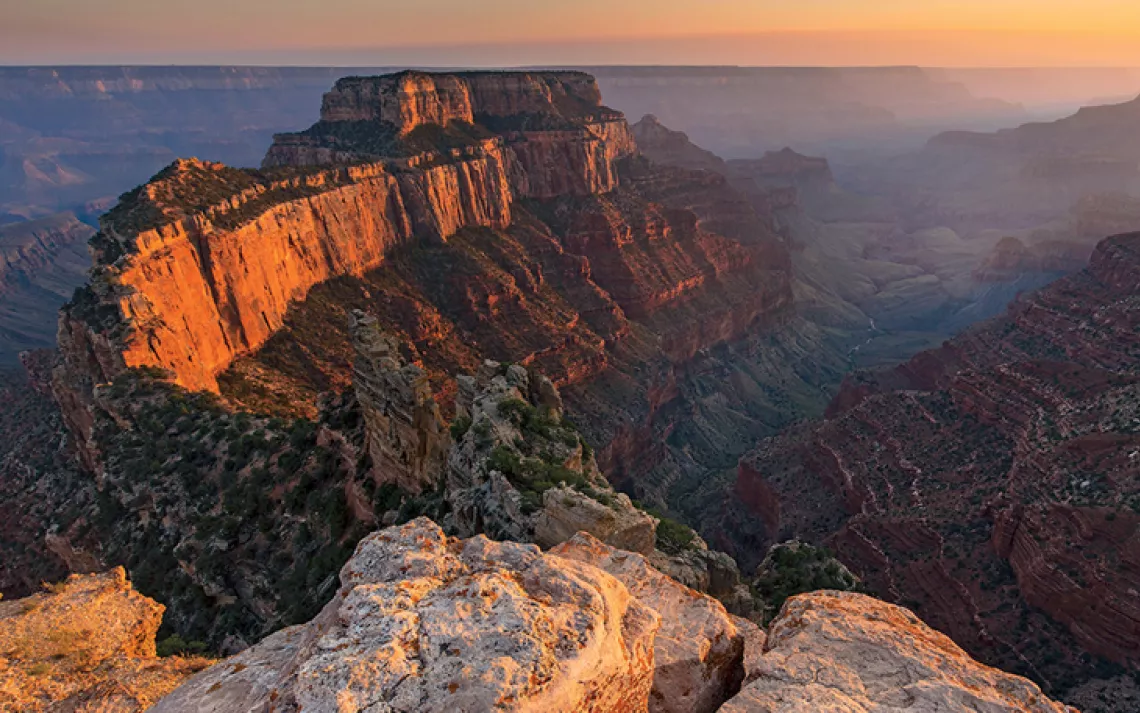Pack to Paddle—and Portage
A canoe guide reveals how and what to pack for your next adventure

Author and outdoor educator Conor Mihell has been guiding canoe and sea kayak adventures in Ontario's Great Lakes region since 2000. Here's his canoe, packed for a 40-day trip. | Photo courtesy of Conor Mihell
When packing for a multiday adventure, canoe trippers have far more space to work with than backpackers do. A typical 16- or 17-foot canoe has the capacity of a half dozen backpacks; by definition, a canoe trip involves a minimal amount of overland travel. It’s therefore easy to pack way too much stuff.
The reality is, the best canoeing destinations—Minnesota’s Boundary Waters, New York’s Adirondacks, Maine’s Allagash, and the plethora of options in Canada, to name just a few—involve passing through portages. These short and often grueling trails are like portals into the deep wild. Pack the right gear the right way and you’ve punched your ticket to glorious solitude.

The author's luggage for a two-week canoe adventure, for two | Courtesy of Conor Mihell
More than a century ago, Duluth, Minnesota–based entrepreneur Camille Poirier acquired the first U.S. patent for a simple envelope-style backpack with shoulder straps, as well as a tumpline—an ancient, highly effective weight-bearing headpiece that’s been used for hauling heavy loads everywhere from Canada to the Himalayas. Today, Poirier’s invention remains the archetypal canoe pack. My choice is the bare-bones #3-70 utility by Duluth Pack ($220). One of these 5,300-cubic-inch, American-made canvas packs will hold clothing and camping gear for a multiweek voyage.

Courtesy of Duluth Pack
Duluth Pack also supplies a garbage-bag-style liner with each of its canoe packs; with the addition of a few patches, mine has lasted for years. An even better option is the Piragis Pack Liner ($70), which is made of nylon. Inside, I sort the following gear essentials:

Courtesy of Piragis Northwoods Company
Sleeping bag: A down bag like Therm-a-Rest’s Questar HD ($240-270) packs to the size of a loaf of bread—but to be effective, it must be kept dry. The water-repellent feathers in the Questar reduce the threat of moisture, but for peace of mind, I always pack my sleeping bag in a drybag, such as the 10-liter Bulkhead View by SealLine ($35). The Bulkhead’s purge valve allows you to compress its contents to take up as little room as possible.

Courtesy of Therm-a-Rest

Courtesy of SealLine
Sleeping pad: Your sleeping pad also deserves the additional protection of a lightweight drybag. Therm-a-Rest’s NeoAir XLite MAX SV ($190-230) packs down smaller than a 32-ounce water bottle and inflates impressively fast. At 2.5-inches thick, it also takes the lumps out of rough ground.

Courtesy of Therm-a-Rest
Clothing and personal gear: I pack a change of warm layers to wear in camp, including Colorado-based Voormi’s cozy wool Confluence Hoodie ($250) in another 10-liter drybag, such as Outdoor Research’s Ultralight Dry Sack ($19). Pack a headlamp, book, and electronics into another five-liter drybag.

Courtesy of Voormi

Courtesy of Outdoor Research
Tent: Since it’s likely to get wet at some point during a trip, there’s no need to pack a tent in a drybag; a basic stuff sack works fine. Hilleberg’s wispy silicone-treated fabrics make the Anjan 3 ($675) tent incredibly light. Couples can spread out in a space that weighs barely four pounds and accommodates three people. Tent poles are best packed separately, outside of the pack liner.

Courtesy of Hilleberg
Camp chair: I justify the indulgence of my Crazy Creek Hex 2.0 Original Chair ($53.50) by making it double as a back pad in my canoe pack.

Courtesy of Crazy Creek
Food and cooking gear: Always pack food items separately. You could use a second Duluth Pack and arrange your food and gear in drybags. An alternative is a five-gallon plastic olive barrel, acquired from a local deli. This holds a long weekend’s worth of provisions and fits in the top of a canoe pack, outside the liner. I like using a homemade “wannigan” (pictured below)—a traditional wooden box rigged with a tumpline—to pack kitchen items such as pots, pans, and a gas stove, and any extra food.

The author's wannigan, plus a 70-pound duffel of food | Courtesy of Conor Mihell
 The Magazine of The Sierra Club
The Magazine of The Sierra Club



